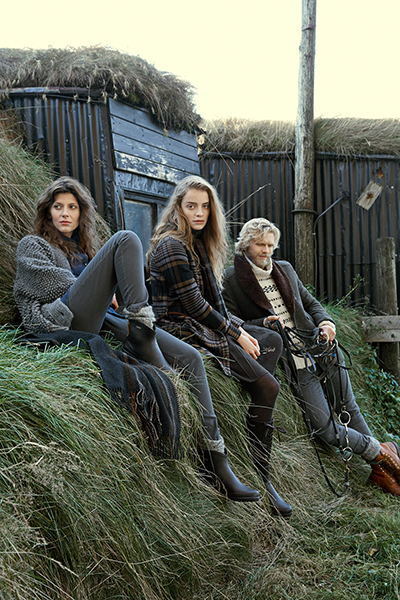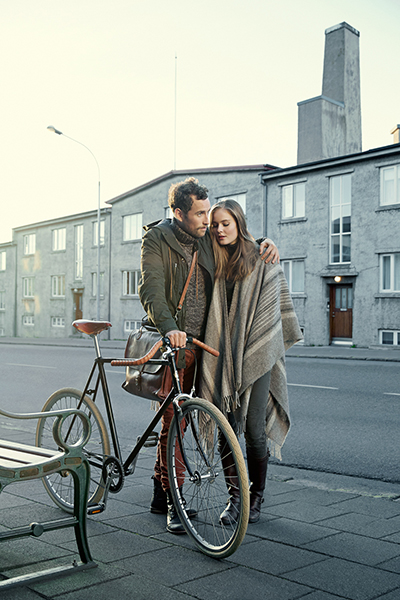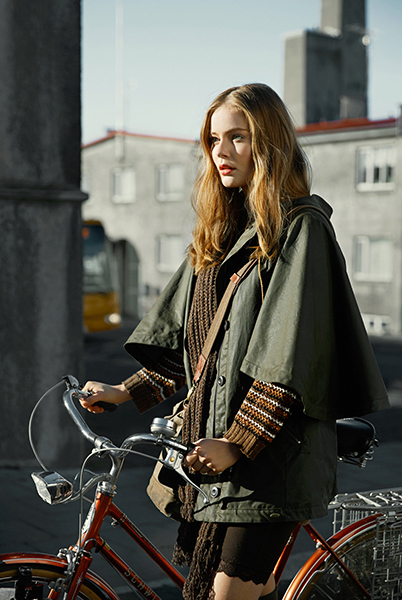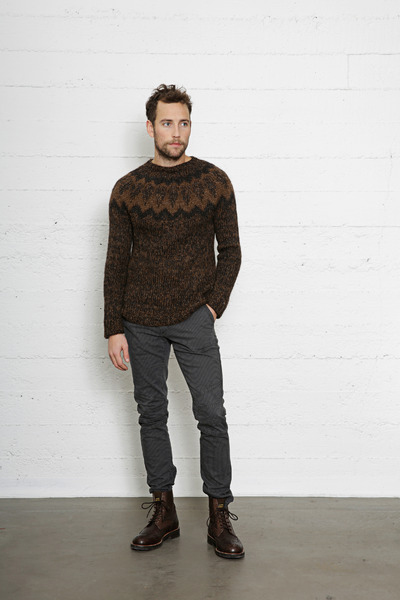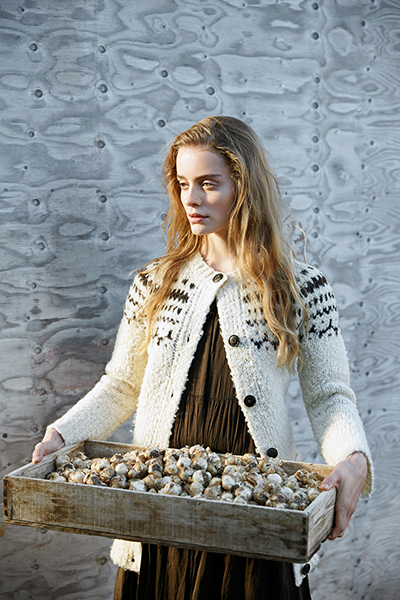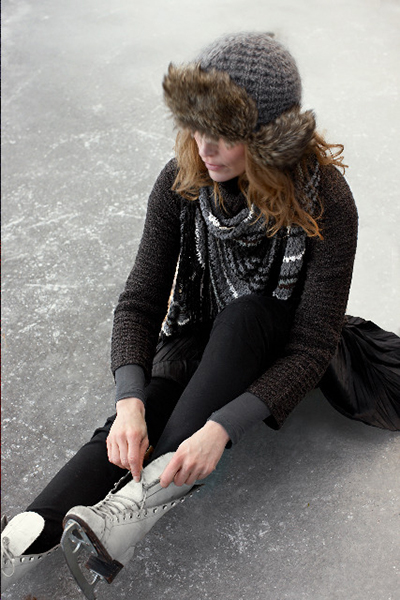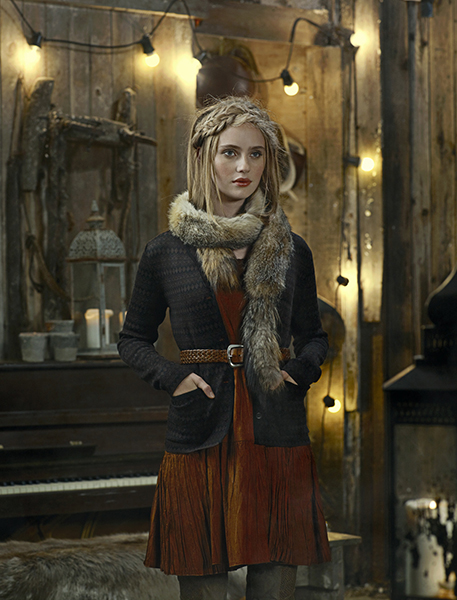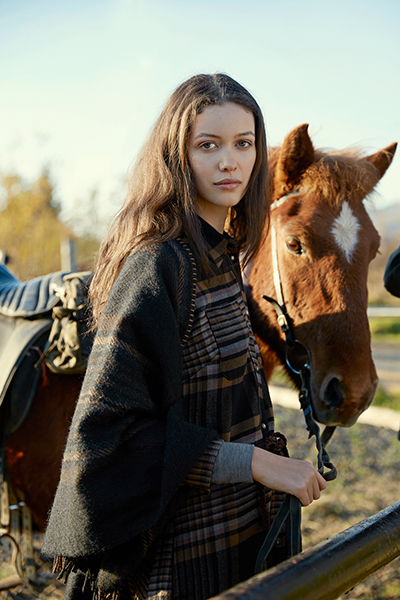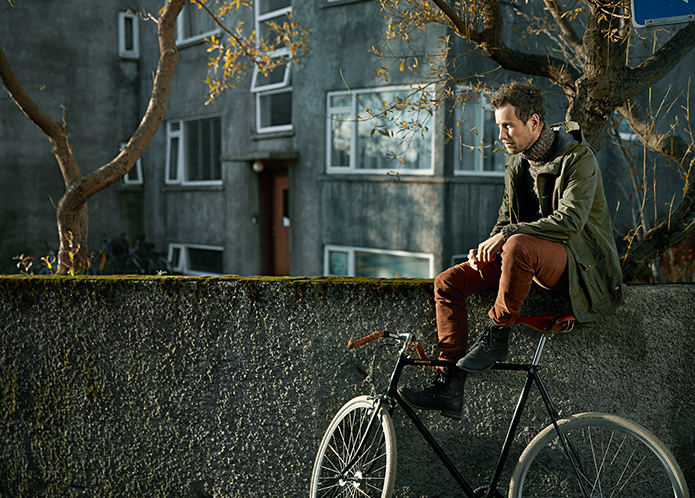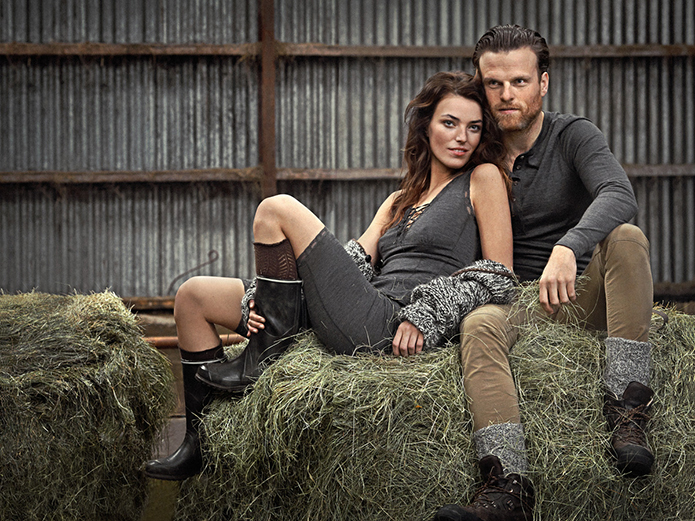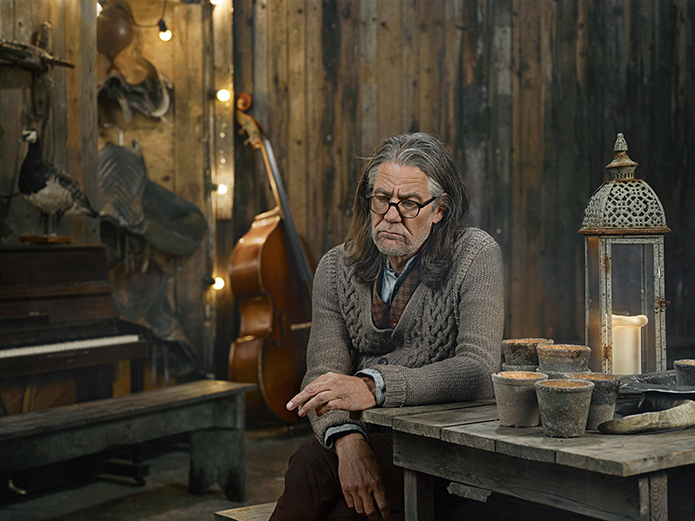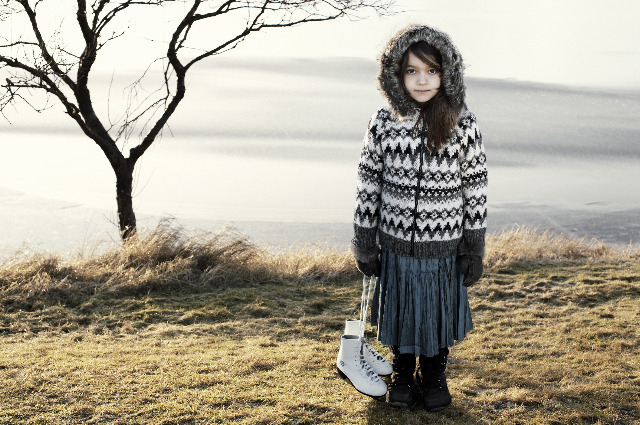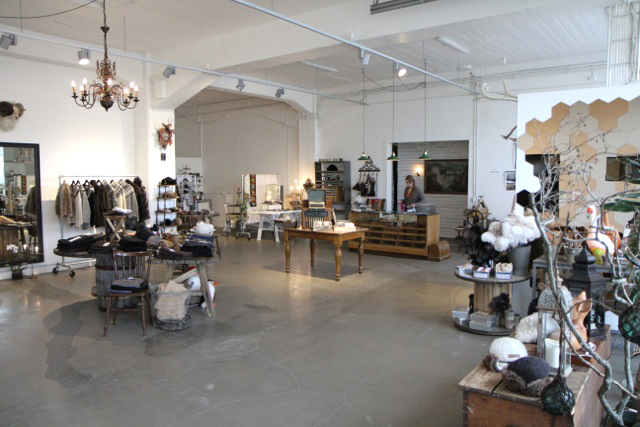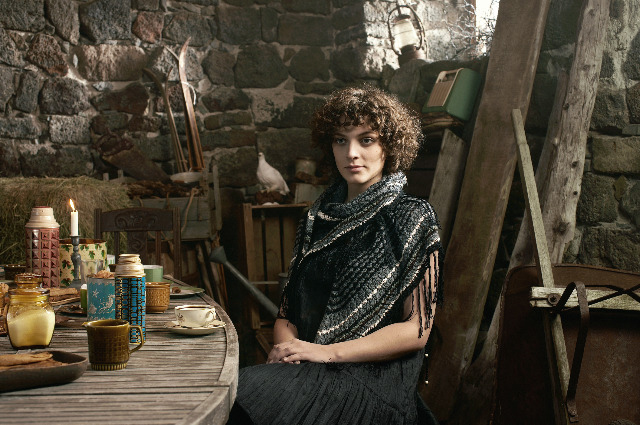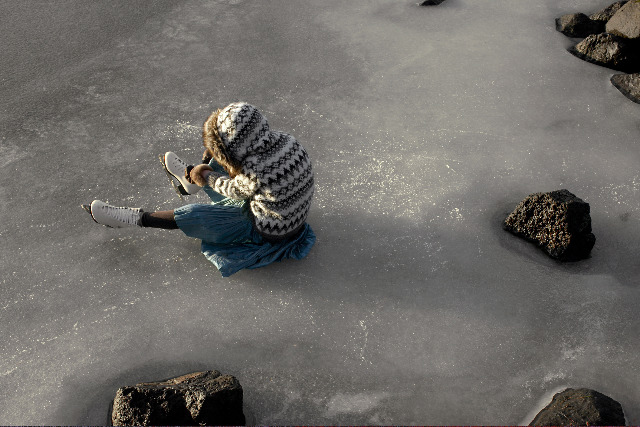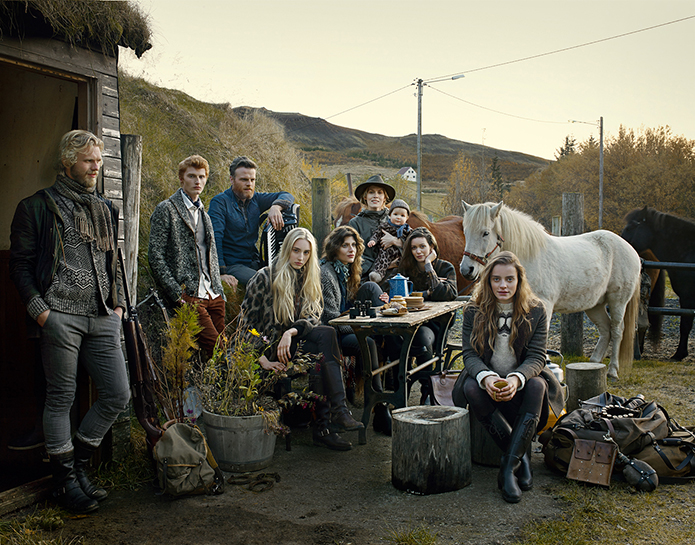
Heritage and modernity is a hard combination to pull off, without one aspect juxtaposed at the expense of the other creating a somewhat contrived look. Yet, Farmers Market have cleverly managed to create a rare range of clothing that achieves a common ground of iconic Icelandic attire reminiscent of a Scandinavian rural existence which looks and feels perfectly at home within an urban setting, from Reykjavik to Japan.
This fashion fusion of the rural and urban, national and international, has its roots firmly grounded within Nordic traditions of nature, arts and craft. Authenticity and integrity are paramount in order to achieve an alternative to seasonal and inevitably disposable fashion that has sadly become the norm. Instead, design collaborations with likeminded suppliers and manufacturers conceive classic pieces that are timeless, from renewable and sustainable sources all around the world; merino wool from Australia, recycled yarns from Italy, Indian raw silk, as well as the unique Icelandic wool.
Each garment is inspired by Nordic nature and customs, using understated tones and textures to bring a vintage ‘peasant’ feel of farming the land and sea, from traditional yoked sweaters to oiled and waxed cottons, subtly reworked to be still practical but also pertinent to modern use and fashion, in the urban arena as well recreational clothing in a contemporary countryside.
This ethical ethos is further explained by Bergthora Gudnadottir, designer, and co-founder, who, together with her professional musician husband, Joel Palsson, have taken Farmers Market, since 2005, from conception to catwalk, whilst retaining the realism of their Nordic roots…
Firstly, for those readers who aren’t familiar with Farmers Market, please can you tell us about your company and brand?
Farmers Market Iceland is a lifestyle clothing brand founded in 2005 by myself and my husband Joel Palsson. Joel’s main profession is music; he is a saxophone player and a composer. I am a textile designer and have been working in fashion since graduating in 1999. In those almost 10 years of existence of our brand we have managed to grow at our own speed and without investors and we are now selling in around 50 shops around the world from Scandinavia to Japan. Our studio and flagship store is located in Reykjavik’s old harbour area – also known as the “Fishpacking district”. This area is now becoming the trendiest part of the city, with restaurants, boutiques and artists studio’s among the fish industries activities.
Your designs are inspired by traditional Nordic patterns, such as the lopapeysa, the circular yoke pattern synonymous with Icelandic knitwear. How do you manage to take these traditional designs and make them desirable to a modern audience?
Well, you could say that my designs are inspired by the culture and lifestyle up here in the northern part of the hemisphere. It does include knitted patterns but also waxed or oiled cotton that used to be what fishermen wore to shield them from the rain.
When we started our first pieces were inspired from the traditional lopapeysa but I designed a thinner and more fitted version for city people. The traditional sweaters – which I love by the way – used to be thick and very heavy to wear when working outside in any weather. Our clothes are more for daily life of people that live and work in the city but enjoy travelling in the countryside.
I understand the lopapeysa is actually a traditional design originating from neighbouring Greenland. Why do you feel Icelanders have embraced the lopapeysa design in recent years, so much so that it’s almost become a symbol for Iceland itself?
There have been many studies made regarding this issue and actually you could go to Peru, Scandinavia and the Fair Isles for similar things too. It is very common for people to knit in Iceland, or at least it used to be. Actually, when I was growing up most of my girlfriends knew how to knit. I learned to knit by hand when I was about 5 years old from my grandmother and I have knitted a lot ever since. The lopapeysa with yoke patterns became a big hit among Icelandic knitters around 1960-’70 so it is really a young “tradition” here even though it has become so firmly rooted somehow. Some people say that it was first introduced to Icelanders by Auður Laxness, the wife of our Nobel prize winner in literature Halldór Laxness, but the story says that she got inspired by the local crafts when travelling in Greenland. Actually, I think it has more to do with a knitting fashion from magazines that came here from Scandinavia.
Aside from traditional Nordic patterns, from where else do you draw inspiration to create your designs?
Every summer I go with my husband and two sons on a camping trip here in Iceland. Although it might sound as a cliché, Mother Nature is my biggest muse when it comes to inspiration, the colours, the weather and the textures – it all somehow gets under my skin and into my system. I have often got the best ideas for our most successful pieces when I am freezing to death in my tent or hiking in the mountains.
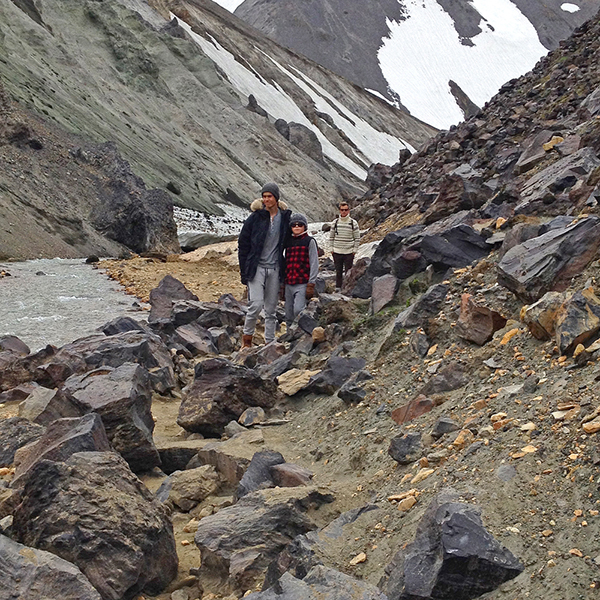
Farmers Market co-founder Joel Palsson and family in Landmannalaugar, Iceland, during inspiration trip
Your colour range predominantly consists of muted whites, greys, blacks and browns – is this a reflection of traditional Icelandic landscape and seascape colours, or are these colour preferences borne out of personal choice?
I think my colour palette is very related to the colours from Icelandic nature even though it is not really intentional. In our current collection we have soft, earthy pink hues that can be found at our geothermal areas as well as some ocean colours that surrounds our island. When I travel I always come home with my pockets full of stones, shells and stuff that in the end make up my colour palette.
Now I am also beginning to work with completely un-dyed wool which I find very interesting. The natural colours of the sheep varies from wool white to grey, brown and almost black and they look amazing when mixed and twisted together.
Your woollen garments are made with wool – lopi – from Icelandic sheep; are there specific qualities attached to Icelandic wool that you favour?
We use quite a lot of Icelandic wool, but we also buy woollen yarn from Scotland, Italy and New Zealand. The Icelandic wool is very unique and is not practical for all types of garments. It is maybe a bit too harsh to be worn next to your skin but works perfectly as a second or even third layer because it is both very insulating and is naturally water-repellent.
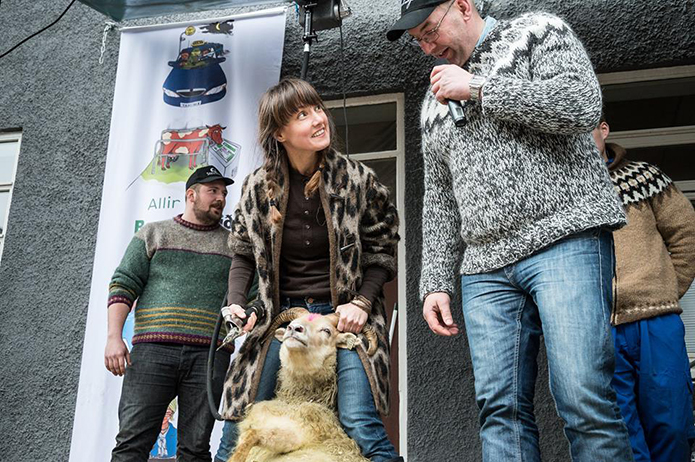
Farmers Market co-founder and designer, Bergthora Gudnadottir, shearing Icelandic sheep, from a festival of Icelandic sheep farmers
You use an interesting phrase on your website, something that we at Merchant & Makers are committed to exploring more fully: “We wanted to place ourselves at a junction. A place where heritage meets modernity, the national meets the international and where the countryside meets the city. We find this an exciting place to explore“. Can you elaborate on this, and how will this exploration manifest itself in future designs?
We are city people that love the countryside. We spend most of our time in the city indoors, at home or work. But as I said previously we love using our free time to be outdoor in the nature. We also like to think about where we are coming from and were we are going. How can we make our future sustainable.
So, our intention is to reflect that lifestyle so to speak and make fashion that is inspired by the countryside but that is just as well suitable for city life. I also get very inspired by the past, old workwear, peasant clothes and vintage clothes in general, but at the same time I am not making historical costumes but rather trying to interpret it into something modern and fit for my modern city life.
What was the catalyst that prompted you to establish Farmers Market back in 2005?
When you think back to the atmosphere in 2005 when we founded the brand “globalism” was a very dominant factor in fashion and business in general. We were pretty tired of that and wanted to do something that was more kind of connected with our roots and heritage rather then doing something mirroring the newest trends from Paris or New York. There’s plenty of people doing that. We also felt that the cycle of fashion was becoming too fast and that there was too much production of disposable fashion. So, we made a concept taking inspiration from our Nordic roots with the aim of doing a collection that would not be “seasonal” but that could rather be a part of your wardrobe for years without going in or out of fashion.
The collection was very small in the beginning with knitted sweaters made out of Icelandic wool since that was the raw material growing in our back yard so to speak. Now we have a broader collection of knits as well as outerwear, woven pants, shirts, dresses and accessories, still with focus on natural materials such as wool, silk, cotton and linen that we now source from different textile companies around the world.
What was the inspiration behind the naming of your company, as readers in the UK will no doubt make the connection of a ‘Farmers Market’ being a place where farmers and other makers sell directly to the consumer?
In Iceland we do not use the term “Farmers market” for locally made groceries. Instead we call that “straight from the farm” (in translation). But the atmosphere connected to the concept of “farmers market” appealed to us as something that is kind of close to home.
Our small nation has a strong connection to the countryside, and actually most of us still have parents or grandparents who grew up on a farm.
We wanted a name that was not literally connected to fashion or trends but that would have a reference to heritage and roots and the fact that we prefer natural raw materials that are in most cases harvested by farmers.
With your knitwear being sold in concept stores and fashion boutiques across Europe, USA and Japan, why do you feel Farmers Market has been so well-received globally?
I guess you could say that unintentionally we caught the zeitgeist of the time when we started and that more people were getting tired of the globalism. I also think that our customers appreciate that we are a very small company and privately owned. A lot of people are now looking for something that is not available everywhere or a part of a huge chainstore.
Is there a typical Farmers Market customer?
I am often asked this question and I always find it difficult to answer. I can’t really define it by age since we have babies, teenagers and all kinds of people up to seniors wearing our clothes, and that I really appreciate and love. But, it is definitely people that like laid back style and like the benefits of wearing natural materials.
You have created a separate online store – ‘Farmers & Friends’. What was your reasoning for establishing the store and what are the synergies with your fashion brand?
Both Joel and I come from the art scene in Iceland, Joel as a musician and my self having studied at the Art Academy of Iceland. So, lots of our personal friends come from that scene too and we found it interesting to make a store where we could mix some of our friend’s creations together with our own. Our flagship store in Reykjavik’s old harbour area is called “Farmers & Friends” where we carry all the Farmers Market collection as well as Icelandic music, books, a few handpicked items that we personally like and apart from that we have one wall in the store dedicated to art exhibitions. Many of those artists are friends of ours. We are always falling for something interesting and have expanded the offerings in our shop quite a lot so not all of it comes from our personal friends, but if we like something and we feel that it fits to our concept then we just make a new “friend” for our shop.
What’s next for Farmers Market and what are your ambitions for the brand?
We take one day at a time, and consider each step carefully. Running a design company like ours requires a lot of differently skilled people and finding the right ones is one of the most challenging parts. It is very important to us to choose carefully the people we collaborate with like our retailers, garment manufacturers, fabric suppliers, the staff in our studio/shop plus the people who work with us on the marketing materials, etc.
We like to make long-time business relationships whenever possible. Some people try to tell us that we shouldn’t make business personal, but for us it is. Life is short. We are not trying to become a big business empire, but rather try to improve on everything we do and stay true to our values. But who knows what the future will bring us; at the moment I am working from the inspiration I got from the places I visited this summer. So I have been emptying my pockets that were full of rocks, shells and stuff from our travels and trying to make some sense out of it all.
Thanks to Bergþóra Guðnadóttir for taking time out of her busy schedule to answer our questions. All images © Farmers Market.

